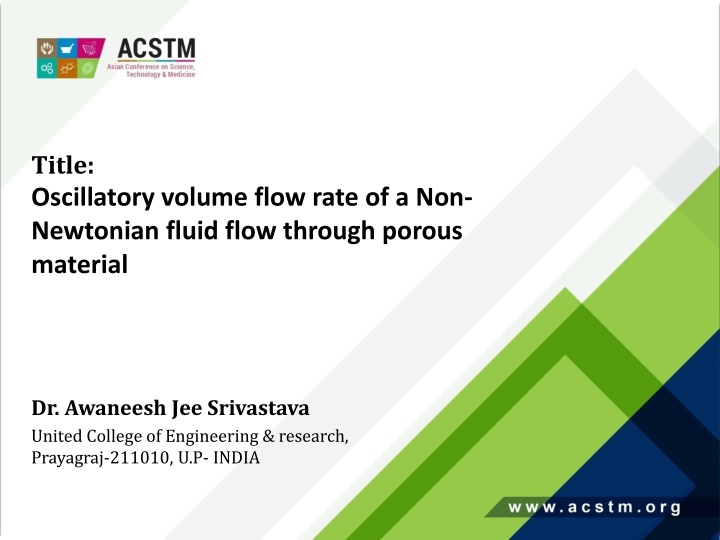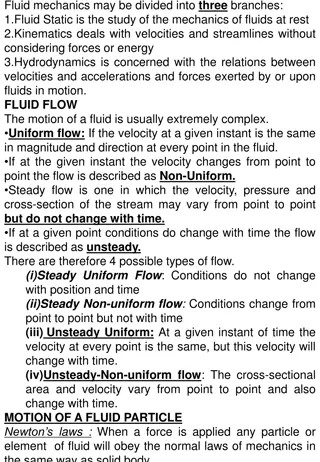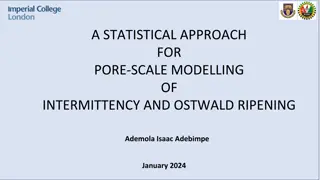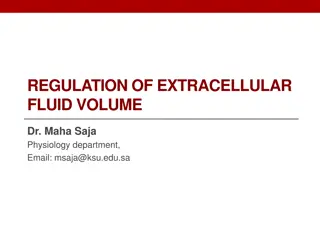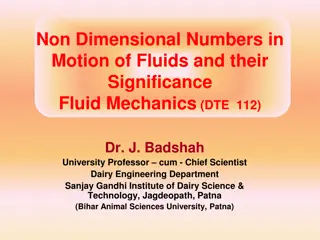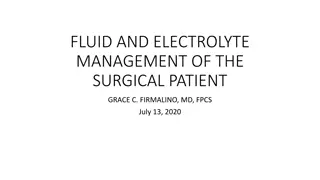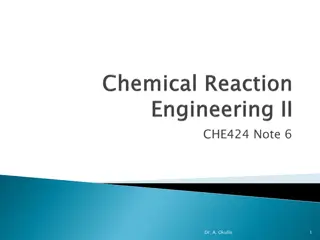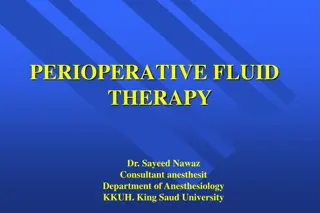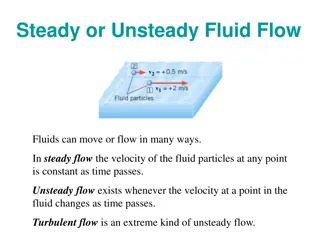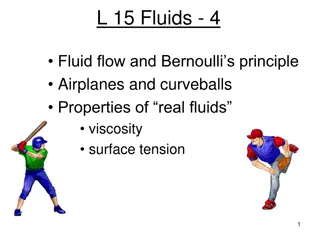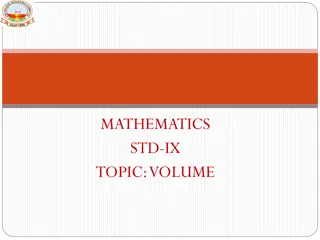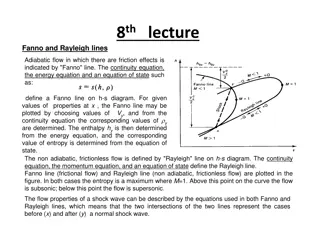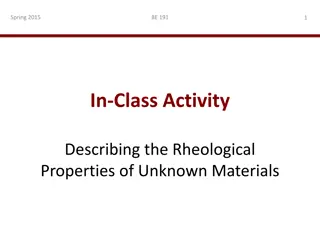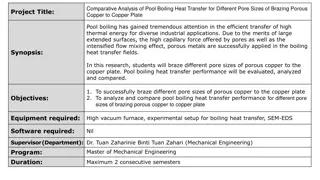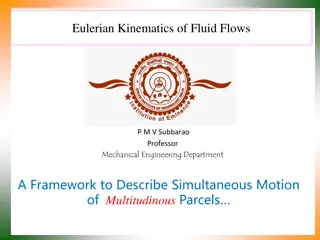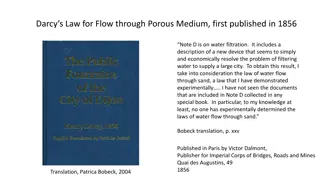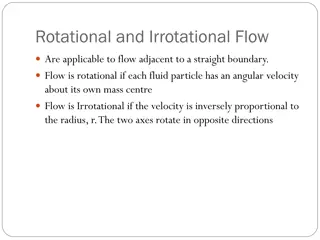Oscillatory Volume Flow Rate of Non-Newtonian Fluid Through Porous Material
Study explores flow characteristics of second-order fluid through porous medium via analytical solutions for oscillatory piston motion. Mathematical analysis considers unsteady flow bounded by parallel plates.
Download Presentation

Please find below an Image/Link to download the presentation.
The content on the website is provided AS IS for your information and personal use only. It may not be sold, licensed, or shared on other websites without obtaining consent from the author.If you encounter any issues during the download, it is possible that the publisher has removed the file from their server.
You are allowed to download the files provided on this website for personal or commercial use, subject to the condition that they are used lawfully. All files are the property of their respective owners.
The content on the website is provided AS IS for your information and personal use only. It may not be sold, licensed, or shared on other websites without obtaining consent from the author.
E N D
Presentation Transcript
Title: Oscillatory volume flow rate of a Non- Newtonian fluid flow through porous material Dr. Awaneesh Jee Srivastava United College of Engineering & research, Prayagraj-211010, U.P- INDIA
Introduction: The non-Newtonian fluids are principally classified on the basis of their behavior in shear. A fluid with a linear relationship between the shear stress and the shear rate, giving rise to a constant viscosity, is always characterized to be a Newtonian fluid. Based on the knowledge of solutions to Newtonian fluid, the different fluids can be extended, such as Maxwell fluid, Voigt fluid, Oldroyd-B fluid, Rivlin - Ericksen fluid or power-law fluid. Several authors are now engaged with the equations of motion of second grade fluid and also to the study of the existence and uniqueness of solutions for flows of volume rate variation case fluids [11, 13]. App. Math. Comput. 137 (2) pp. 437-450. ASME J. Appl. Mech. 67 pp. 274-281
Objective: The main objective of the present study is to bring out the flow characteristics of second order fluid through porous medium between two parallel plates. The flow is created by an arbitrary but given volume flow rate with time. The modeled problem is solved analytically by Laplace inversion theorem for oscillatory piston motion which is very useful in various practical and engineering applications. transform with
Mathematical Analysis Let us consider the unsteady flow of an incompressible, homogeneous second grade fluid bounded by two parallel plates at z=0 and z=h. The z-axis is taken normal to the plates and fluid flows through porous medium. The graphical presentation of present model is given by Fig.
Since the plates are infinite so the velocity is a function of z and t only. Under these assumptions, the governing system of equations to the problem in a porous medium is (Chen et al. [11]) For the non-vanishing components u and v of the velocity field. Introducing a new variable and Now we have 2 3 u p u u v (1) (2) = + + , u 1 v p 2 2 t x k z 2 z t 3 v = + + , v 1 2 2 t y k z z t = + G u iv p = + P i x y 2 3 G G G 2 , (3) = + + 2 P v G 2 t z z t
v Where kinematic viscosity, , is the modified pressure, is the fluid density, and are material parameters . ( ) 1 0 , 0 1 by is porosity parameter, = P is the = = v k 1 1 The appropriate initial and boundary conditions are ( ) ( ) ( ), 2 , t Q h t u dz t z G p h h (4) = = ( ) t Here is the average inlet velocity. It is clear that the initial condition is related to the inlet volume flow rate. We consider the oscillatory piston motion starting from rest. The piston motion is described as up
